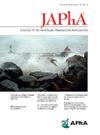Effects of passive information dissemination on human papillomavirus vaccination attitudes and knowledge among pharmacy visitors: A cluster randomized controlled trial
IF 2.5
4区 医学
Q3 PHARMACOLOGY & PHARMACY
Journal of the American Pharmacists Association
Pub Date : 2025-08-07
DOI:10.1016/j.japh.2025.102901
引用次数: 0
Abstract
Background
In Japan, human papillomavirus (HPV) vaccination rates remain low, partially owing to safety concerns from media reports. Pharmacies, as accessible health care facilities, often serve as sources of health information. However, the impact of passive information provision in pharmacies on public awareness and behavioral intentions has not been completely evaluated.
Objectives
This study examined whether passive dissemination of HPV vaccine-related information in community pharmacies—through posters and leaflets—could improve visitors' knowledge and motivation to recommend HPV vaccinations.
Methods
A cluster randomized controlled trial was conducted in 20 pharmacies, of which 10 assigned were to the intervention group and 10 to the control group. Posters and leaflets on HPV vaccinations were displayed in the intervention group only, without the pharmacist's explanation. Adult visitors (n = 182) aged 20–75 years completed baseline and follow-up questionnaires using the vaccinaTion & Hpv Knowledge scale (THinK) and 7C Vaccination Readiness Scale. The primary endpoint was the change in attitudes toward HPV vaccination (aHPV)—a composite indicator reflecting willingness to receive the vaccine, recommend it to others, and seek related information—at 12 weeks.
Results
No significant difference in aHPV score changes was observed between the groups at 12 weeks (mean difference = 0.14; P = 0.18). However, knowledge of HPV infection was significantly improved in the intervention group at 8 and 12 weeks (P < 0.05). No significant changes were observed in any of the subscales of the 7C Vaccination Readiness Scale.
Conclusion
Passive information provision in pharmacies improved HPV-related knowledge but did not enhance motivation to recommend vaccination. To enhance promotion, other active modalities—such as dialogue-based communication by professionals—may be more effective.
被动信息传播对药房参观者人乳头瘤病毒疫苗接种态度和知识的影响:一项聚类随机对照试验。
背景:在日本,人乳头瘤病毒(HPV)疫苗接种率仍然很低,部分原因是媒体报道对安全性的担忧。药店作为无障碍的保健设施,往往是保健信息的来源。然而,药店被动提供信息对公众意识和行为意图的影响尚未得到全面评估。目的:本研究考察了在社区药房被动传播HPV疫苗相关信息(通过海报和传单)是否可以提高访问者推荐HPV疫苗接种的知识和动机。方法:选取20家药店进行整群随机对照试验,其中干预组10家,对照组10家。仅在干预组张贴了HPV疫苗接种的海报和传单,没有药剂师的解释。年龄在20-75岁的成年访客(n = 182)使用疫苗接种和Hpv知识量表(THinK)和7C疫苗接种准备量表完成基线和随访问卷。主要终点是对HPV疫苗接种态度的变化(aHPV),这是一项反映接受疫苗、向他人推荐疫苗和寻求相关信息意愿的综合指标。结果:12周时两组aHPV评分变化无显著差异(平均差异= 0.14;P = 0.18)。然而,干预组在8周和12周时对HPV感染(kHPV)的认知显著提高(p < 0.05)。在7C疫苗接种准备程度量表的任何子量表中均未观察到显著变化。结论:药店的被动信息提供提高了hpv相关知识,但没有增强推荐接种疫苗的动机。为了加强宣传,其他积极的方式——比如专业人士的对话交流——可能会更有效。
本文章由计算机程序翻译,如有差异,请以英文原文为准。
求助全文
约1分钟内获得全文
求助全文
来源期刊
CiteScore
3.30
自引率
14.30%
发文量
336
审稿时长
46 days
期刊介绍:
The Journal of the American Pharmacists Association is the official peer-reviewed journal of the American Pharmacists Association (APhA), providing information on pharmaceutical care, drug therapy, diseases and other health issues, trends in pharmacy practice and therapeutics, informed opinion, and original research. JAPhA publishes original research, reviews, experiences, and opinion articles that link science to contemporary pharmacy practice to improve patient care.

 求助内容:
求助内容: 应助结果提醒方式:
应助结果提醒方式:


